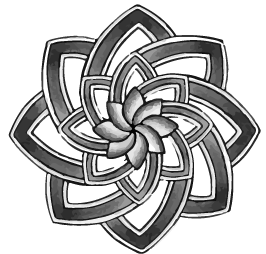Primitive Reflexes
and why they matter
Primitive Reflexes are a set of instinctual, automatic movements that a fetus does in the womb. These reflexes emerge to develop all the systems in the body in a synchronized symphony. It also helps the fetus come out of the womb, take their first breath, and supports survival in the first year of life. After the Primitive Reflexes have completed their purpose, they become inhibited, and higher brain centers take their place. This process of Primitive Reflexes emerging, serving their purpose and inhibiting, creates the building blocks of how the brain and Central Nervous System develop and mature. If they become locked in the system, it creates fragmentation in the maturing of the brain and nervous system. Below are examples of Primitive Reflexes and what happens if they become stagnated and remain active.
Moro Reflex
Moro Reflex
The infant startle reflex is associated with fight and flight and is also known as the grasping reflex
Emerges in the fetus around nine weeks in the womb
Usually serves its purpose within four months to one year of life
This Primitive Reflex helps the infant to take their first breath, raise alarm to the adults around them if needed, and grasp onto their parent
The matured Moro reflex is called “the Strauss response,” originating from the cerebellum
A retained Moro Reflex can put the Nervous system in a state of constant overstimulation.
Emotional symptoms include —
Free-floating anxiety
Mood swings
Low self esteem
Hyperactivity followed by fatigue
Withdrawn or hyperactive or both
Difficulty with criticism
A need to be in control of the surrounding environment
A child can be sensitive, perceptive, and imaginative but, on the other hand, immature and overactive
Physiological Consequences
Stressed immune system
Prone to allergies
Possible recurring infections
Shallow breathing
General weakness or tension in the body
Weakened constitution
Tonic Labyrinthine Reflex (TLR)
TLR Reflex in Flexion
TLR is named after the inner ear canal (labyrinthine) which is also known as the vestibular system
The first part of TLR is in the flexion stage
Emerges in the womb between 10-12 weeks and usually integrates around four months after birth.
As the fetus’s head flexes below the midline, the arms and legs flex into a fetal position.
TLR Reflex in Extension
The second part of TLR is in the extension stage
Activated by birth when baby extends head out of the womb
Reflex emerges at birth and usually integrates between 3 and 4 years of age
As the head extends backward below the spine, the whole body extends
A retained TLR will constantly disrupt balance and impact other sensory systems.
May have trouble acquiring true standing or walking security.
May experience difficulty in proprioception, which will impact judgment of the body in space, distance, depth, and speed, which may impact PE and other physical activities
Clumsiness and slumped posture patterns, with weak or stiff muscle tone
Difficulty following sequential ideas and instructions
Difficulty with eye tracking (Nystagmus), which impacts reading skills
Asymettrical Tonic Neck Reflex (ATNR)
ATNR Reflex
Emerges in the fetus at around 18 weeks.
Serves its purpose within six months after birth.
The ATNR, along with other reflexes, assists the baby in unscrewing down the birth canal and is fully reinforced by the birthing process.
Cesarean or forceps can interfere with the reflex fully reaching its potential.
A retained ATNR can impede the two sides of the body from working graciously together.
Possible effects of retained ATNR:
Eye tracking may not function smoothly, and reading and comprehension skills can be hindered
Writing skills may never be automatic
Can impede the two sides of the body from working graciously together
May have difficulty multi-tasking
The extended palm and arm can cause an immature pencil grip which hinders the development of a mature pincer grip.
Awkward non-symmetrical movements when running or swimming



